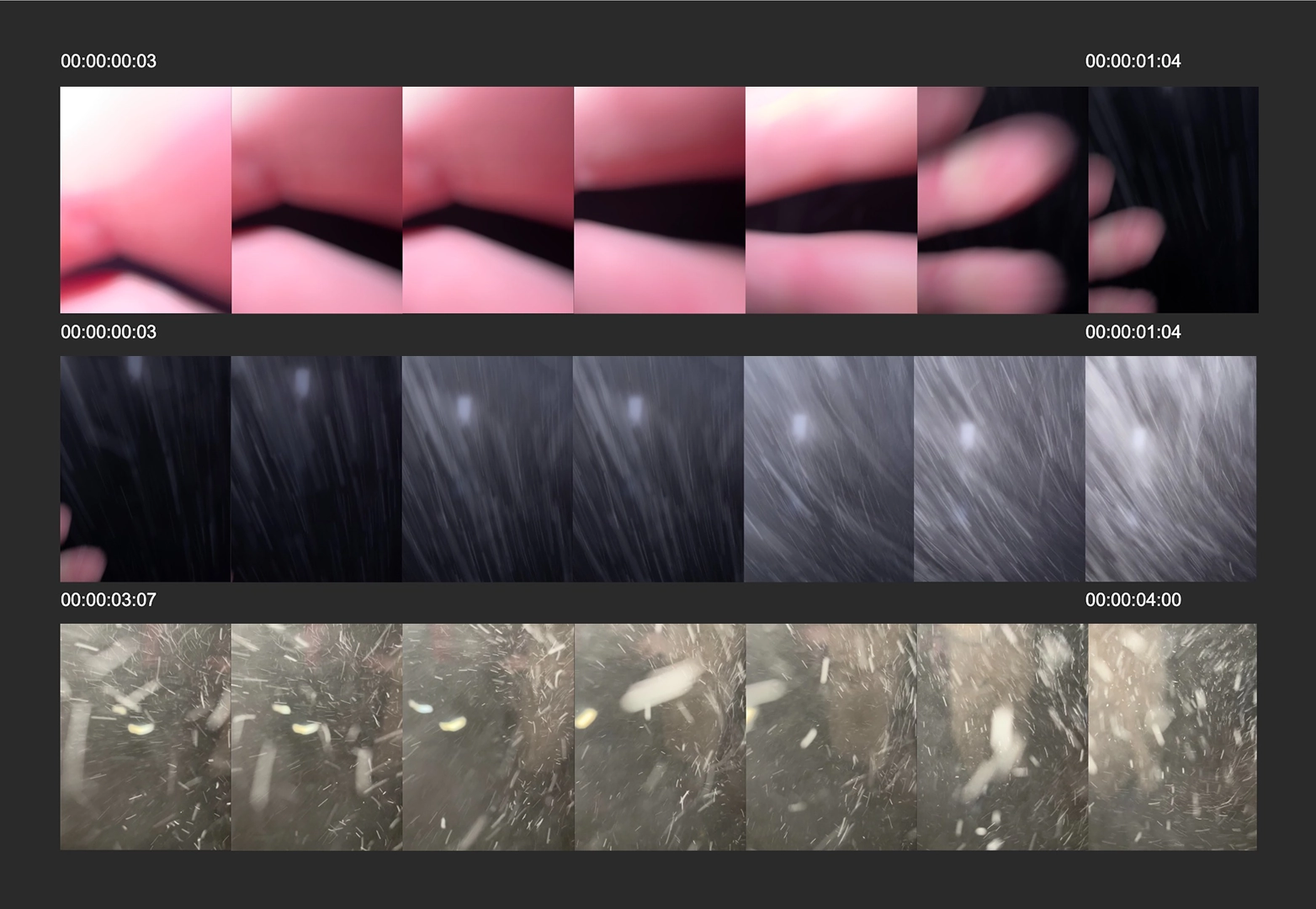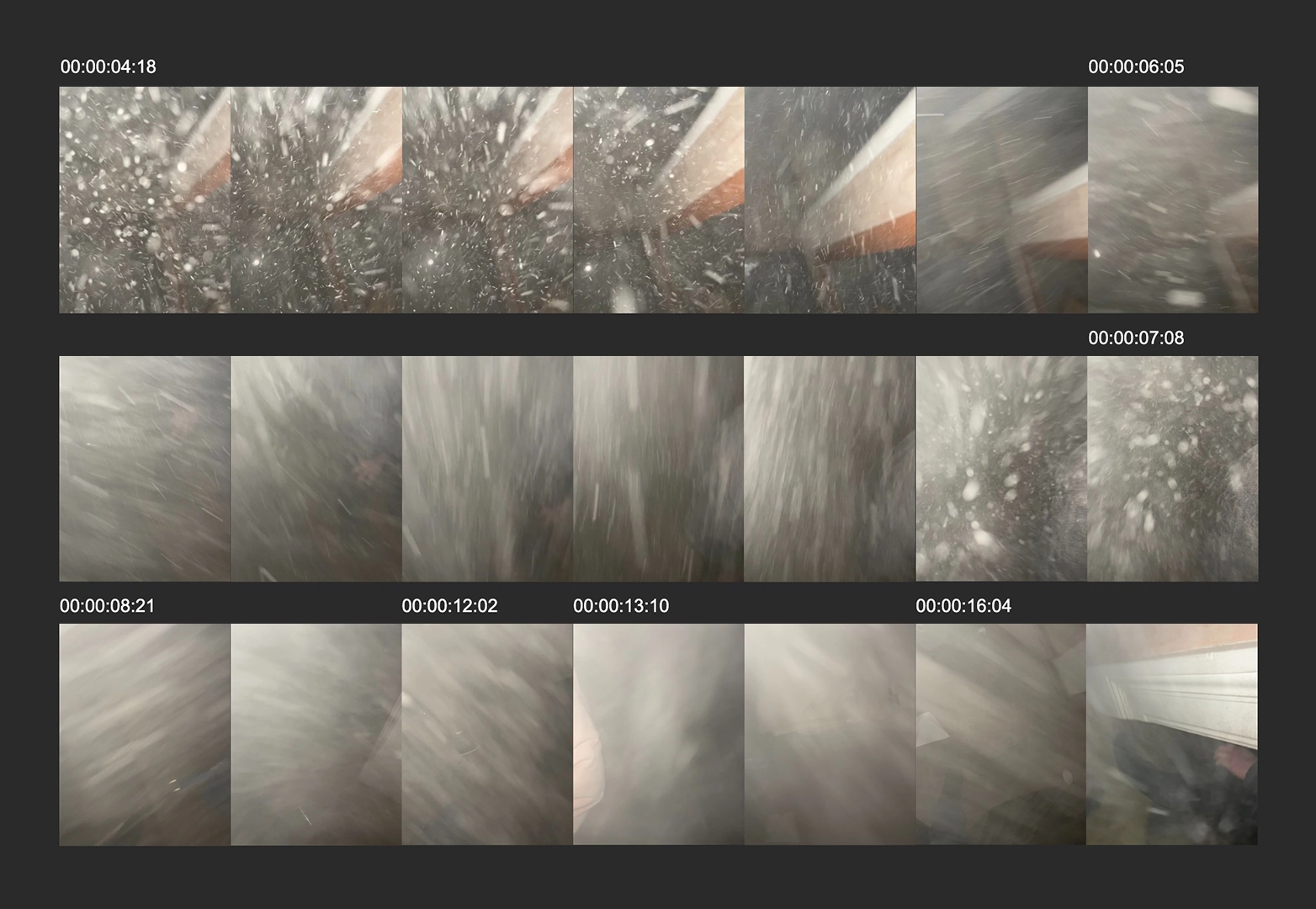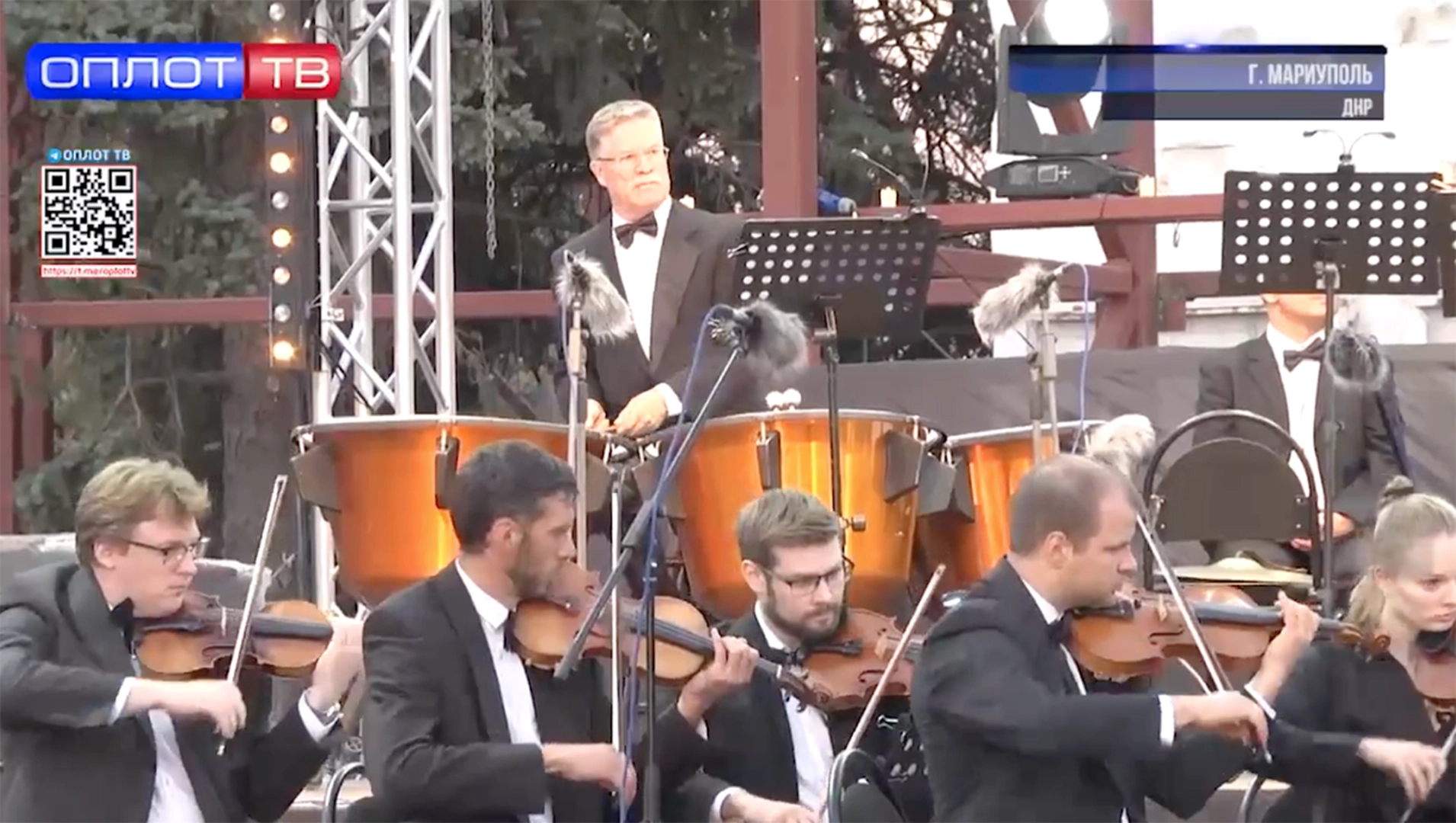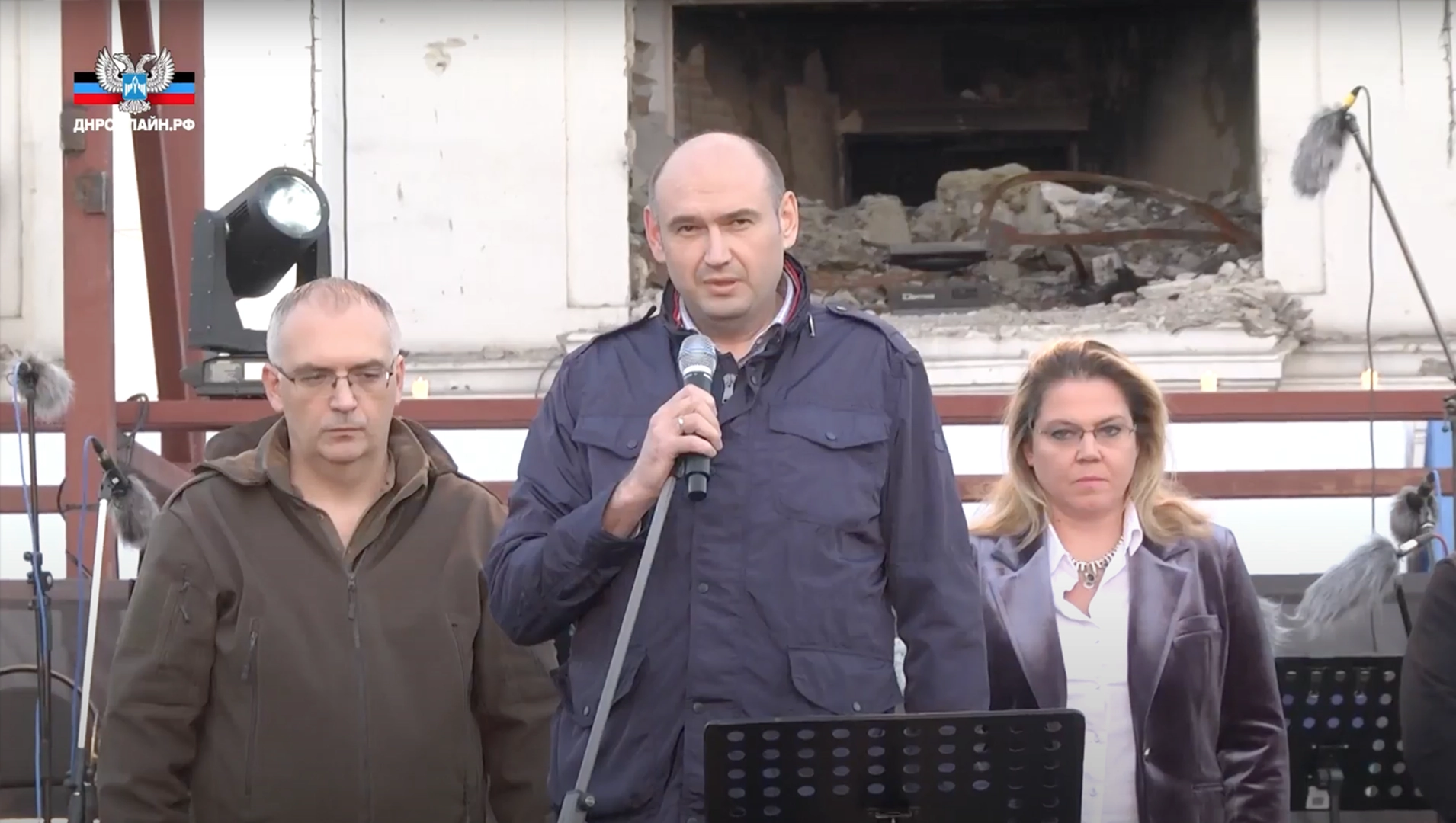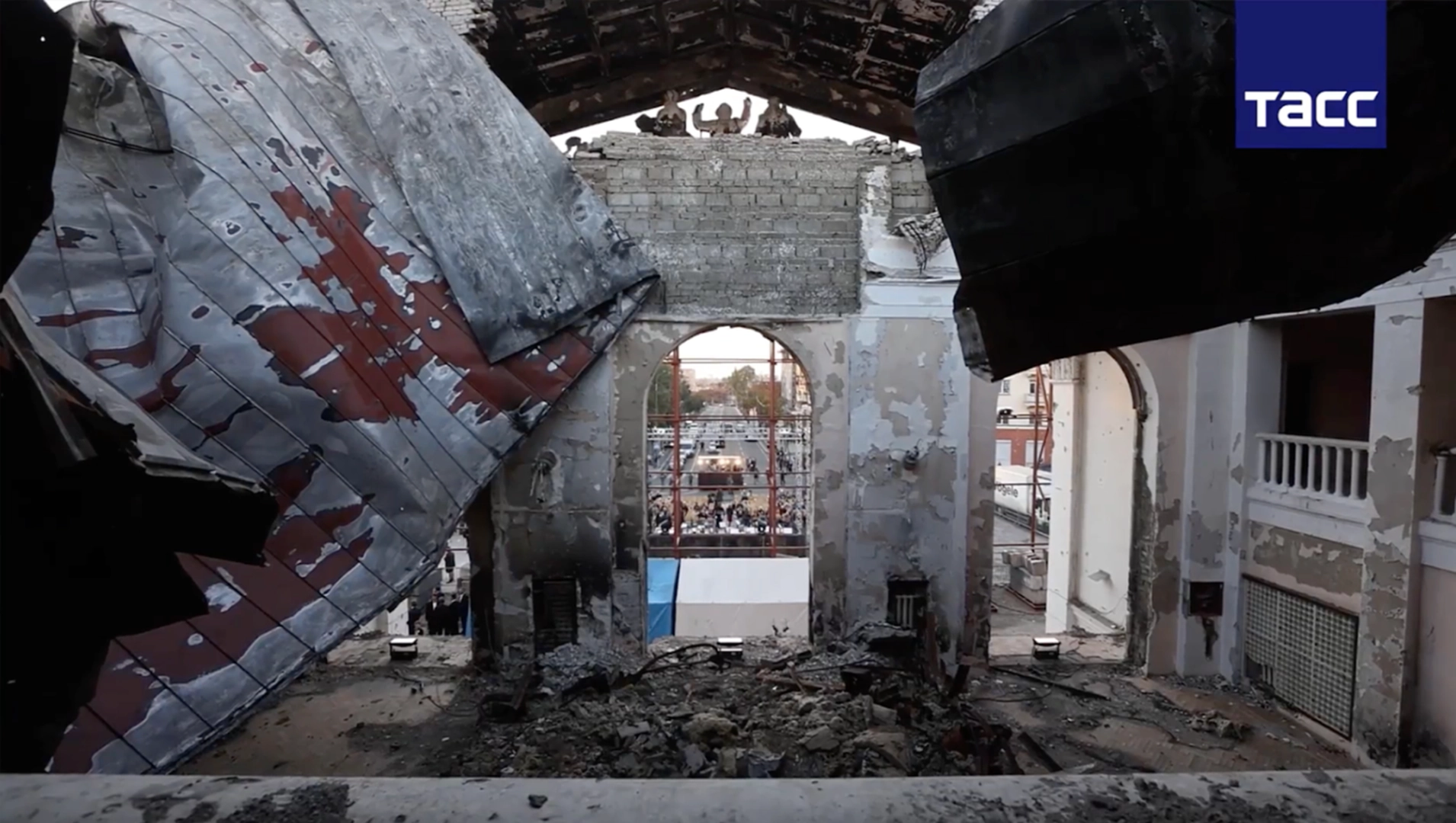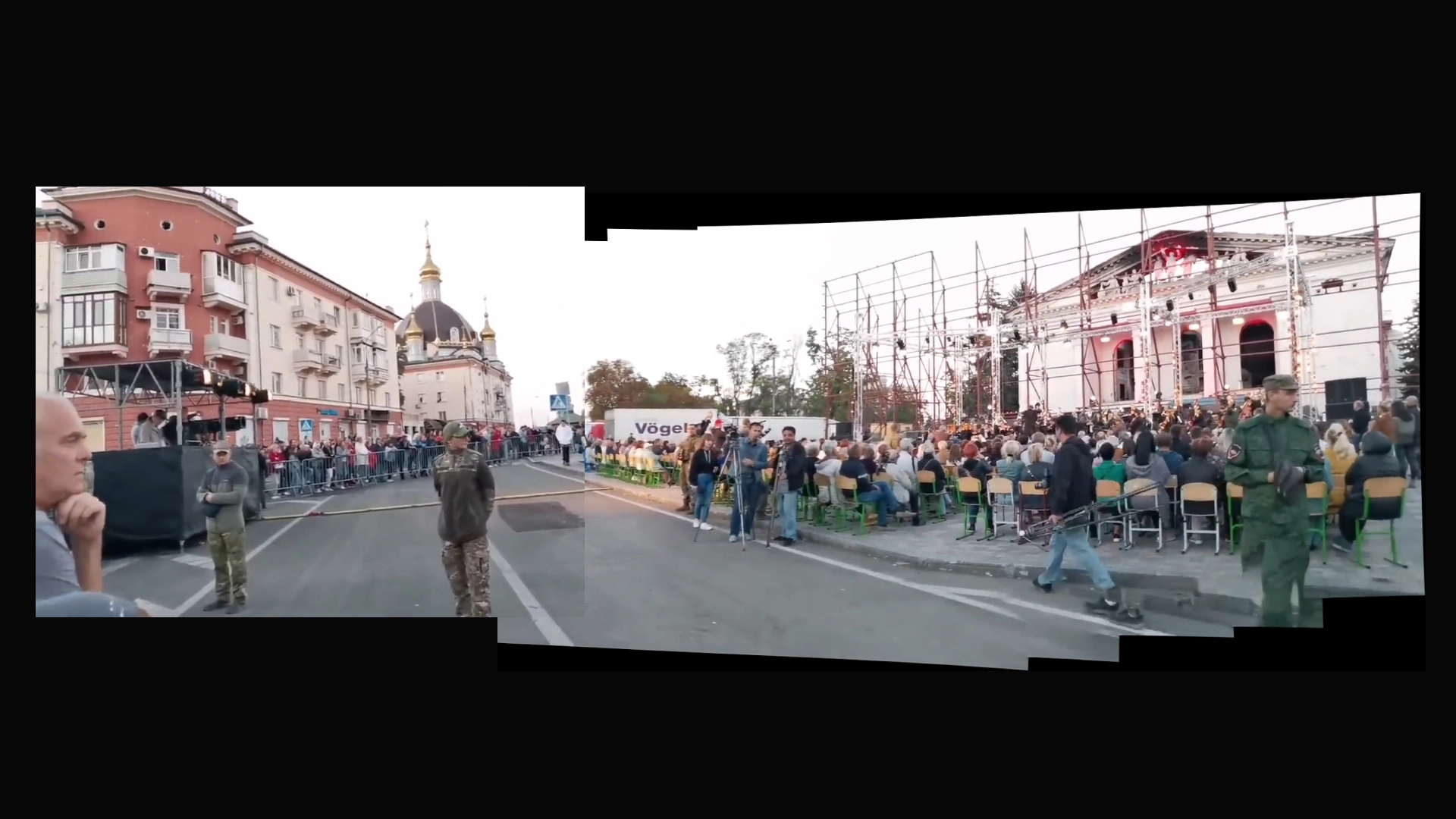
Terror environment
Author:Svitlana Matviyenko
One of the largest civilian shelters in Mariupol, the Donetsk Academic Regional Drama Theatre, was destroyed by the Russian forces by hitting it with, allegedly, two bombs in the morning of March 16, 2022. The bombing is an ultimate act of terror, but terror proliferated beyond this act by opening for the occupational forces unlimited possibilities for violence and suppression. This essay by Svitlana Matviyenko discusses such possibilities through the notion of a “terror environment,” the mechanisms of its formation and practices that constitute it.
matter
Terror is ecological: it penetrates the networks of life-affirming connections to weaponize the organism’s deep embeddedness in the environment. It invades the mechanisms supporting a living body and turns them dangerous or deadly. This way, terror makes the living body hostage to its own cybernetics1 – by making it sweat when it should preserve every degree of warmth, tremble when one must stay still, freeze when one must move fast, or uncontrollably intake the unnecessary large gulps of poisoned air: terror sabotages humans’ already-limited ability of self-preservation. The material composition of terror environments is diverse. They are constituted by solid, liquid, or gaseous matter – from debris to pollution – moving at radically different speeds and in different directions2.
These environments are defined by sonic, olfactory, or thermal elements – from the wailing air alerts to punctuating explosions followed by shock-waves transferring energy at interfaces between tissues. The latter leads to “cellular disruption, soft tissue destruction, … bone micro-fractures3” and the overall body’s long memory of the shock that causes nearly unrecognizable slow destruction of life.
Terror environments today also include a variety of informational objects, practices, and events from signal emission and jamming, instrumentalized to rupture or overrun initial communication, to psyops, propaganda, and random digital chaos often used to distort or control it. The subjects of war are caught in the complex materiality of the terror environments they inhabit. It is crucial to consider how entangled all the material components of such environments are and how they interact by simultaneously impacting the behavior of the subjects of terror. The perception of information, for example, does not happen in a vacuum. It is integrated into a network of existential material connections from the sonic landscapes the subjects inhabit to the quality of the air they breathe and, probably, to the freedom of movement they are granted or denied. The discrepancy between how frequently and successfully these aspects of terror environments are weaponized in military conflicts and how poorly the crucial nuances of their aggression are accounted for by the law opens the enormous possibilities for avoiding punishment for acts of violence.
constrain
War is a criminal act of aggression against citizens that is waged without the justification of self-defense and with the goal of territorial gain and subjugation. War is the industry of crimes that the International Criminal Court frames through a detailed system of laws of war. In the eyes of the law, there are limits to violence, or red lines, crossing which means committing a war crime. However, the topology of wars is that wars are crimes in themselves, different from war crimes, and, at the same time, containing war crimes. The bombing of the Mariupol Drama Theatre by the Russian Armed Forces on March 16th, 2022, is representative of such a complexity. Is the event of bombing a single event, or is it part of the broader siege of Mariupol by the Russian forces that began on the first day of the big-scale invasion? The answer to this question will help to understand the intent and nature of the violence. But first, a necessary definition: the bombing of the Mariupol Theater is an act of state terrorism.
A premeditated and unlawful act of terrorism committed either by rebels or governments can be isolated, but it can also take place in the context of war. Terrorism is a form of warfare in which violence is directed toward civilians rather than the military. As historian Charles Townshend writes, “Clearly, war and terror are intimately related.” However, “the essence of terrorism, [in] contrast [to war],” he explains, “is surely the negation of combat. Its targets are attacked in a way that inhibits (or better prohibits) self-defense.” Warfare is a merciless stratification of the population onto less and the least protected. Terrorism amid the war acts precisely upon the weakest, it is drawn to the most defenseless realms. The absence of a military no-fly-zone over the territory of Ukraine, for which Ukrainian lawmakers and politicians called on NATO from the first day of the large-scale invasion4, gave the Russian Federation the “green light” to continue bombing Ukrainian cities and towns. Similarly, the agreements between Ukraine and the countries that supply long-range guided missiles and rocket systems, such as ATACMS and HIMARS, demanding Ukraine not to use them on the territory of the RF are not based on the International Law that does not prohibit such practice during a military conflict. According to the experts, defense studies specialist Michael Clarke (King's College London) and the International Law specialist Stefan Oeter (Hamburg University), the guaranties that Ukraine was forced to give in exchange for the weapons are political in nature5. Ukraine can only target the aggressor on its own territory, damaging its own soil and water, along with the remains of the infrastructures, making the land, the only guarantee of the future, increasingly unrecoverable. It is truly unthinkable, but the reality is that Russia remains protected by these undisclosed agreements between the world powers made somewhere beyond the law, while the unjustified constraints keep Ukraine ever more vulnerable and open to terrorist acts committed by Russian forces. Meanwhile, Ukrainian civilians all over Ukraine are consistently targeted by incendiary weapons, cluster bombs, as well as cruise missiles, ballistic rockets, and drones at long range. The degree of vulnerability of Mariupol, in particular, depends on these political decisions. The bombing of the Mariupol Drama Theater is a direct result of the assigned constraints.
volume
As the dictionary says, terrorist bombing is recognized among other terrorist actions, including assassination, kidnapping, hijacking, arson, torture, and mass murder. Terrorist acts are not random, even if they may look as such, they are built into the complex and dynamic texture of war. Following the battlefield constraints that create the conditions of possibility for Russian terrorism, the aerial attacks give the targeted territory a dimension: it becomes voluminous. This type of military tactic has a history, it can be traced to WWI which marks, as media theorist Yuriko Furuhata noted, the beginning of the “territorial understanding of the atmosphere.”6
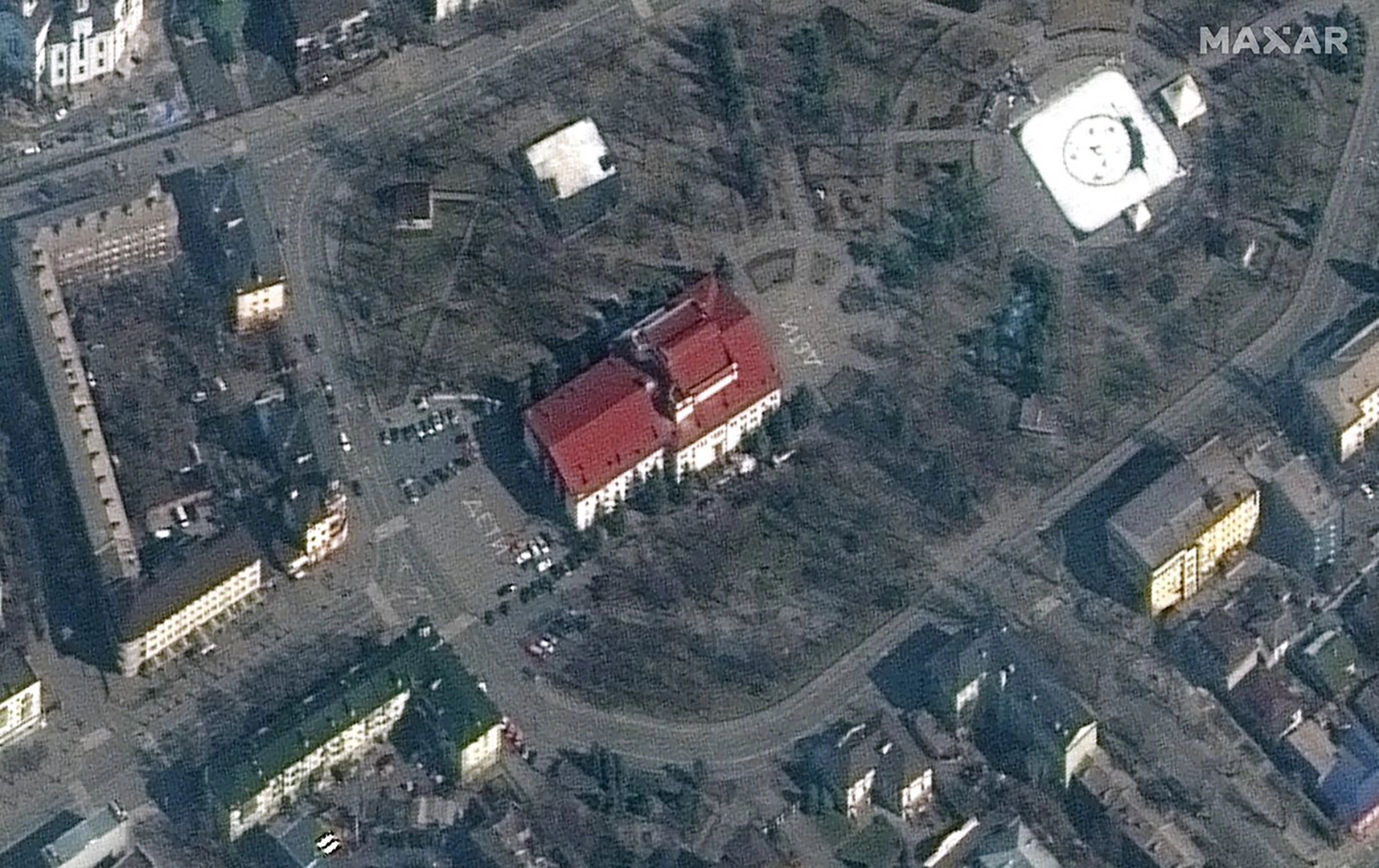
Satellite image of the theater. March 14, 2022. ©Maxar Technologies
While the notion of “territory” remains crucial for reporting, analyzing, and narrativizing the war, the latter transgressed a traditional sense of two-dimensional territory at least a century ago. In the 1980s, philosopher Paul Virilio described this change in warfare as a move from a battlefield to a battlespace7 envisioned through the categories of “distance, depth, [and] three-dimensionality”: “space became a training-ground for the dynamic offensive and for all the energies it harnessed.”8 Drawing on Virilio, political scientist Stuart Elden theorized a vertical dimension of territory, claiming that “territory is a volume rather than an area.”9 Philosopher Peter Sloterdijk went further to propose that “the discovery of the ‘environment’ took place in the trenches of World War I”,10 referring to the practices of deploying gas as a weapon. To that end, he provocatively claimed, the twentieth century was shaped by the paradoxical convergence of the practice of terrorism with environmental thinking11.
Such environmental awareness is not prerogative to an aggressor only, it also characterizes the targeted subject entrapped by the war. 12In fact, it situates both an aggressor and a target in a deadly relation where they operate as parts of a single assemblage: the aggressor aiming at suppressing by terror or eliminating the target entirely and the target fighting for survival by any means available. The image taken by Maxar Technologies on March 14th, 2022, demonstrates such a relation. The residents of the shelter in the theater drew the Russian word ДЕТИ (CHILDREN) in two locations on the square outside the theater the very same day. The accuracy with which they determined the necessary size of the letters so they could be seen from a military airplane demonstrates that they were able to estimate the scope of the voluminous battlespace they inhabited along with the aggressor. This awareness makes the temporary residents of the theater the subjects of war. The targeted subject of the battlespace is split: terror generates the impossibility of choosing an ultimate survival strategy: according to an anonymous witness, the sign was an attempt to identify the building to attacking forces as a civilian air-raid shelter hosting children, and not a military target. At the same time, witness Viktoria Dubovytska indicates the division within the sheltered community as to whether or not such a sign would produce an opposite effect by inciting the aggressor’s attack. This typically indicates the general uncertainty and oscillation between different survival strategies suggested by the group members trapped within the battlespace rather than the existence of two or more groups in the community expressing their certainty about said strategies.
routine
After the extensive shelling of Mariupol’s residential areas and civilian infrastructure until it was turned into a “wasteland,” Russian forces established an occupational regime in the city in early April. Meanwhile, the fight over Azovstal and some parts of the city still continued. Although terror is typically associated in military and political theory with direct attacks such as bombing, understanding the war environmentally allows one to see how the terror environment persists after direct attacks. More so, sustaining and propagating the terror environment is an essential technique on which the occupational regime relies. In the following two months, many direct witnesses of the bombings, including the bombing of the Drama Theater and also Mariupol’s Maternity Hospital No 3, food storage facilities, aid distribution sites, supermarkets, and residential buildings serving as shelters, left the city through the evacuation corridors or by finding or organizing the individual escape routes. Meanwhile, those direct witnesses who chose to or had to remain in the city lost the possibility to share their accounts of the siege that contradicted the narratives forcibly installed by the occupational forces. Witness Viktoria Dubovytska recalls that when she was leaving the city, she had already heard a woman suggesting that the Drama Theatre was bombed by the Ukrainian Forces, which provoked her enraged response.13 The terror environment operates by enabling the reterritorialization of memory in a version of the past that did not take place. It is accomplished by means of several different but simultaneous practices. One of them is the occupational reconstruction of the destroyed city.
In May 2022, the combat operations in the city were still ongoing at the Azovstal Iron and Steel Works, where the Ukrainian Armed Forces held resistance for 80 days until their surrender on May 16, 2022. Already then, the cleanup of ruined buildings for the upcoming reconstruction of the city began, often referred to as the creation of Russia’s new Potemkin Village14. The Master Plan of Mariupol’s reconstruction was developed and approved by the Ministry of Construction of Russia together with its subordinate Unified Institute of Spatial Planning of the Russian Federation, and the decree was signed by the Head of the so-called DPR, Denis Pushylin, on July 30, 2022.
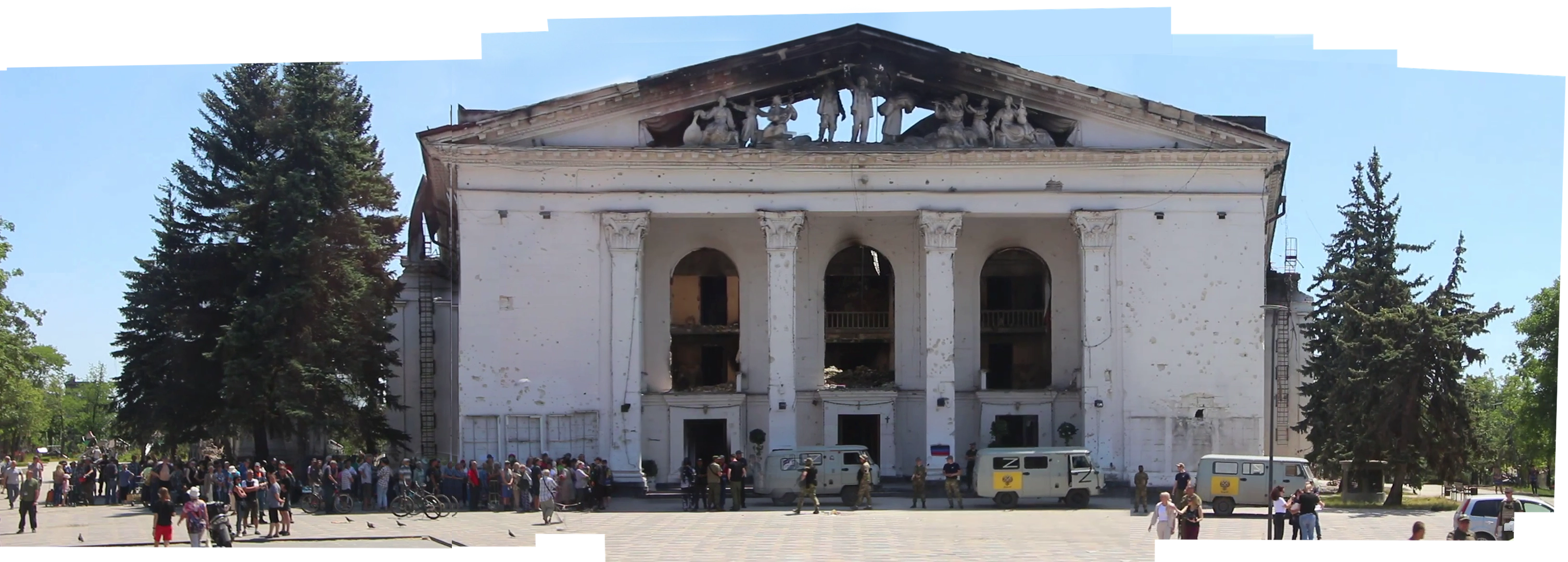
Panorama of one of the “humanitarian aid distribution” events in front of the theater ruins. ©Center for Spatial Technologies
The videos by pro-Russian bloggers obtained from their channels document the preparations for realizing the incoming plan for occupational reconstruction. The video from June 2022 is representative of how the terror environment is structured under the conditions of the so-called-peace amid the war. It opens with a voice-over by a female correspondent warning her colleagues against approaching the Drama Theater from the right side, where the half-destroyed wall still poses a danger to bystanders. The square, meanwhile, is full of people who were drawn there by the occupational forces to receive a bag with “humanitarian aid” upon demonstration of the passport proving they are dwellers of Mariupol. The line that is formed in proximity to the theater's ruins is long, and the crowd, especially where it gets closer to the trucks with aid, is tightly packed with people and growing denser. A woman in line speaks of humiliation. All trucks have big screens installed on the side transmitting the Russian news by the government-controlled channel Rossiya 1. One can hear fragments of reports about the beginning of the fishing season near Kamchatka. Soon, the voice of Russian central warmongering propagandist Vladimir Solovyov, followed by an unidentified female news anchor reporting that Western Ukraine is already occupied by Poland. The distant explosions are continuously heard in the background. A big power generator near the Theater allows people to charge their phones or other electronic devices, while the supply of electricity is scarce due to the destruction of the infrastructure.
The practices that constitute the city routine on the square near the bombed Theater are congruent with how they operate within the terror environment. Shortage of food supply, the olfactory experience of rotting matter, the sound of explosions, and the presence of the Theater ruin itself are the conditions, objects, and experiences that constitute the environment on the central square. While the residents are waiting for an allowed portion of food and water, the approved narrative about the meaning of the war is streamed to the crowd from the screens mounted on the food trucks. The Ukrainian Internet providers are replaced by the Russian state-owned and there is not enough electric power or elementary knowledge to turn to the help of VPN. This combination of needs and experiences is an effective way of “persuading” the subject within the terror environment to submit to the occupational power.
concert
On September 10th, 2022, the day of the 79th anniversary of Mariupol’s liberation from the Nazi occupation during WWII, the current pro-Russian occupational regime hosted a dual-purpose concert staged on the ruins of the Drama Theater. First, the event was used for indoctrination of citizens on the new status of Mariupol as a “Russian city”; and second, the concert served for content production to be broadcast to broader audiences on the occupied territories and within the Russian Federation.
Dubbed “In the Name of Life: Mariupol,” the event is described by one pro-Russian commentator in the found video15 as a “powerful humanitarian action” by the “gentle, benevolent force” consisting of the State Kremlin Orchestra of Russia under the artistic directorship of Principal Conductor Konstantin Chudovsky and Russian actor, People’s Artist of the RSFSR Aleksandr Mikhailov, known for openly supporting the so-called "Luhansk and Donetsk People’s Republics" along with the Russian invasion of Ukraine. The concert opened with the address from the Head of the so-called Donetsk People’s Republic, Denis Pushilin, read by a DPR representative: “Russian music will be performed today in Russian Mariupol.” His speech was followed by another address by a deputy head of the Department of Presidential Affairs of the Russian Federation, Olga Lyakina, emphasizing the rootedness of the city in Russian culture. The concert featured the State Kremlin Orchestra performing Russian Romantic composer Pyotr Tchaikovsky’s Symphony No. 4 in F minor, known for its appeal to patriotic and heroic feelings and described by music scholars as “an apotheosis in Imperial style.”16 The choice of the new “patriotic” poetry heroizing the invasion of Ukraine was equally calculated: Mikhailov read the works by a Laureate of the Great Literary Prize of Russia, a Member of the Union of Writers of Russia, Boris Lukin, and Russian poet residing in Crimea and supporting the occupational regime Konstantin Frolov-Krymsky. He finalized the recitement by Frolov-Krymsky’s lines echoing multiple nuclear threats articulated for over a decade by Russian news anchors and politicians: “...yes, we will die, but the whole world will be burned to ashes. And then, dressed in our parade uniform, we will turn our last question to the Messiah: ‘Tell us, God, why do we need the world, where there is no place for Russia?’” Voicing this “question to the Messiah” on the spot where the Russian forces dropped two 500-kilogram bombs on the residents of Mariupol six months earlier — the atrocity the Russian government continues to deny by blaming Ukrainian forces — is a subtle, or not so subtle, way of enticing terror by simultaneously mobilizing doubt and disbelief, fear and trauma, knowledge and ignorance. Anything, really, that makes one feel powerless and disoriented amid a radically fragmented reality of war, so that one might be quite eager to settle on any proposed version of the past, present, and future.

Panorama of the concert staged on the ruins of the Drama Theater on 10 September 2022. ©Center for Spatial Technologies
The overall mise en scène and the composition of the news episodes for television broadcast in the Russian Federation and the Russian-controlled temporary occupied regions of Ukraine are rather straightforward, cutting from the scenes of the performers to the scenes of the audience or the representatives of occupational government and back again, with occasional zooming in and out to show viewers’ faces. These official news episodes construe the public event as an encounter between the audience of Mariupol residents, the Russian officials, the representatives of the so-called DPR, and the Russian performers. The space they design is square, and the scenes of the ruined theater make the fourth component of such composition serve as a perspective on the performance – technically if we follow the editing orienting the viewer within the artificial space of a news episode, and symbolically, if we follow the meaning it assigns. The television viewer, thus, is led to believe that the four components of the commemoration event, people under occupation, occupational governments, patriotic graphomania, and imperial music, that are brought back by force to the ruined theater – are in concert.
screen
A close examination of various recordings of the concert reveals a more complex spatial organization of the event, allowing a glance behind the scenes shown by the government-controlled Russian and pro-Russian media. The reconstructed street view around the Mariupol Drama Theater demonstrates the full architecture of the event that deserves attention. First of all, the broader picture reveals a different power dynamic and different groups of actors involved in the event, including, apparently, not one but two audiences: a primary group of viewers seated in front of the stage and a remote group of city residents separated from the primary audience by the line of security guards, a wide cleared street space, and a fence. This video is recorded by a viewer from behind the fence. The reconstruction shifts our attention from the performers, as shown on TV, to the primary audience in front of the stage: they are the center, and the event is indeed organized around them. The remote audience, a second-order observer, watches the primary audience, a first-order observer, placed into a securitized perimeter in front of the ruin. The focus of attention is switched to how one looks instead of what one sees, or indeed, the fact that one is capable of looking at all at the performance set on the murder site.
A reconstructed street view shows a production scene. The subject of the terror environment is reproduced there to be immediately reified and mediatized as the content of propaganda. The topology of the media environment today is that a digital object travels convoluted routes to multiple destinations simultaneously. So, a Russian news episode for TV, in fragments or as a whole, also reaches a Ukrainian viewer – through social networks, investigative or research projects, or randomly, despite the blockages on all sides. The encounter is almost unavoidable.
What does it show? The people in front of the concert stage look at the camera or turn away, some faces are relaxed or indifferent, and others are tense. Some are laughing, others are annoyed by the camera gaze. It seems some actually enjoy the verses, it seems the patriotic lines resonate with them, but then they look bored by Tchaikovsky. They listen to the officials congratulating them on “their liberation,” and they even seem to pay attention: in the end, this is a new regime – and whatever they think about it – pro, against, or indifferent – for them, the whole event is a “learning experience” to some degree, at least, for survival purposes. They are here with no way of easily getting out, and sometimes, no will either, held by their surviving houses, the remains of the community, gardens, fields, and graves. The proximity of their faces on the screens is deceiving. Zooming in does not bring the viewer closer, probably, only further due to the increasing opacity of mediation and the enforced narratives running over the footage. The moment it feels like one is learning at least something from these screens about how Ukrainian people live there, behind the new Iron Curtain under the occupation… one should be reminded: this is Russian TV.
Text written by Svitlana Matviyenko
Edited by Roman Hardashuk, Ksenia Rybak
Visual materials and research by: The Center for Spatial Technologies
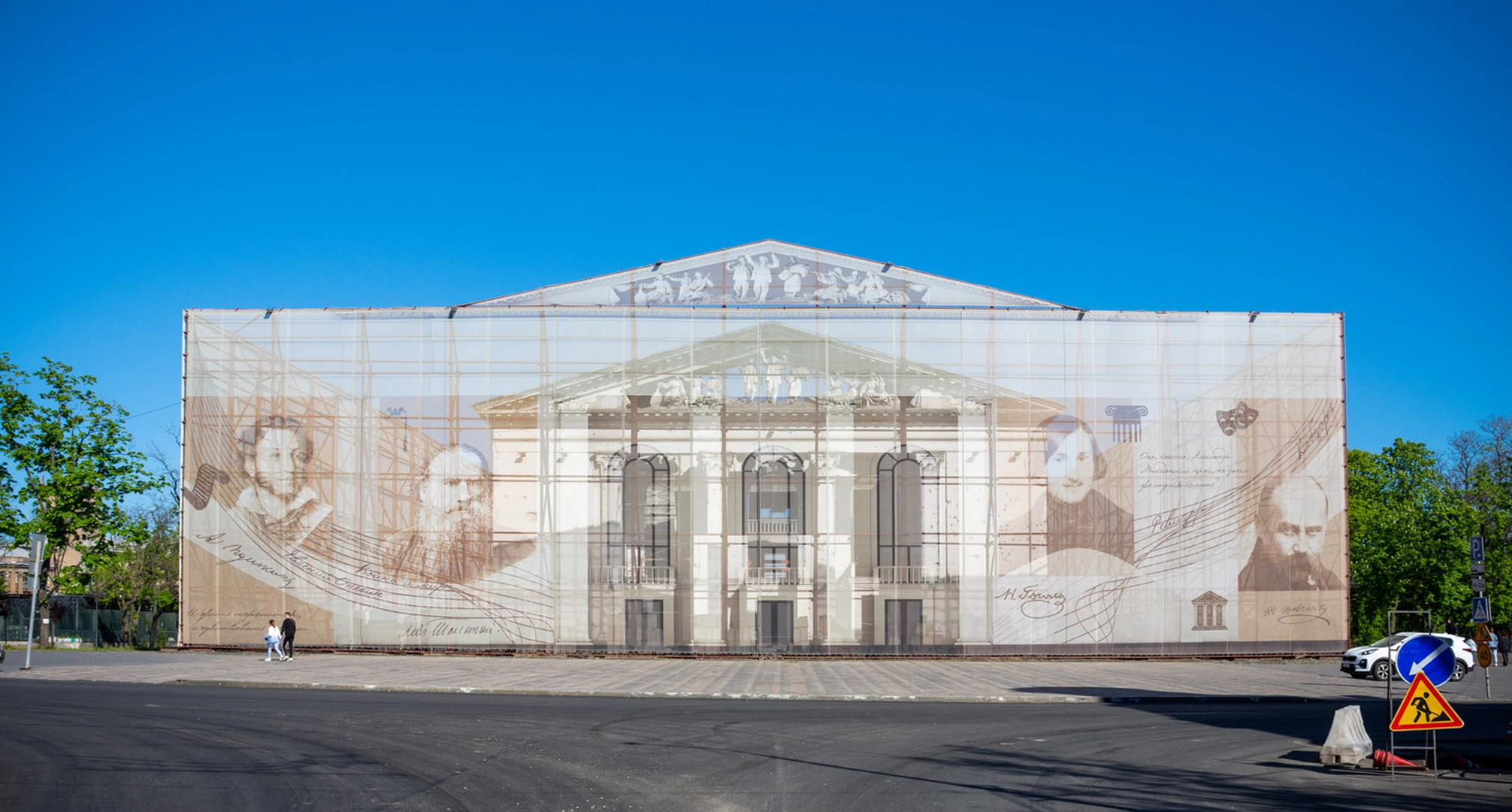
Still from Russian state-controlled media.
